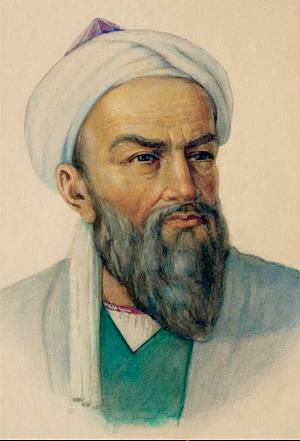
ABU RAYHAN BERUNIY
(973 – 1048)
In the history of World Science, the first half of the 11th century can be called the Beronian century. Abu Rayhan Beruni was an early medieval scholar. The thousand-year history of the Khwarezmian culture, one of the brightest cultures of the Ancient East, is embodied in it. Berunius melodius was born in 973 near the ancient capital of Khorezm, the city of Qiyot. His name is Muhammad and his father’s name is Ahmad, and Beruniy is the name of his nisbah, which means origin and lineage. Berunius is derived from” berun“, meaning” outside”, Meaning born outside the city or living there. Abu Rayhon, on the other hand, is his kunya, a nickname, meaning rayhon’s father, a rayhon man in Arabic. The sources do not specify why berunius was given such a kunya. He is known to have been interested in plants as early as his youth, due to which it is suggested that he may have been nicknamed Abu Rayhon. He spent his childhood and adolescence in his homeland, where he studied various sciences and took shape as a scientist. In addition to his native language, he studied Arabic, Sogdian, Persian, Syriac, Greek, and later sanskrit in India. He could read and write in these languages, was free to treat and treat.
According to one of his scientific works, during his life in Khwarezm, he made important astronomical observations in the city of Qiyot from 990. For these observations, he himself invented astronomical instruments. Berunius was the first person in the Middle East to determine the circumference of the Earth, stating that the Earth could orbit the sun.
The struggles that began for the throne among the khwarezmian nobility did not allow the scientist to continue this scientific work, so in 998, at the age of 22, he was forced to leave his homeland and for some time lived in emigration in the city of Jurjon on the southeastern coast of the professional sea.
Berunius ‘ scholarly legacy included 150 works on mathematics, astronomy, geography, minerology, history, ethnography, philology, and philosophy. “Osor ul-boqiya” (“monuments left over from ancient peoples”) began to be written in Jurjan during the period of emigration and graduated in 1000.
In 1005, Berunius returned to Khwarezm and continued his career in the “MA’mun Academy”.
One of the rare works of the scientist, which at the time of the peak of his work was completed, is “India”. Alloma serves as one of the leading sources in the comprehensive study of Indian history, science and culture. His work on astronomy, ” Al law al Mas’udi” (“the law of Mas’ud”), was dedicated to Sultan Mas’ud. The year of the book’s completion is uncertain. The text of his works” relics from ancient peoples“,” India“,” Geodesy“,” Mineralogy“,” Mas’ud’s law“,” elementary concepts from The Art of astrology ” and others were published and translated into different languages. Selected works were published in Russian and Uzbek.
